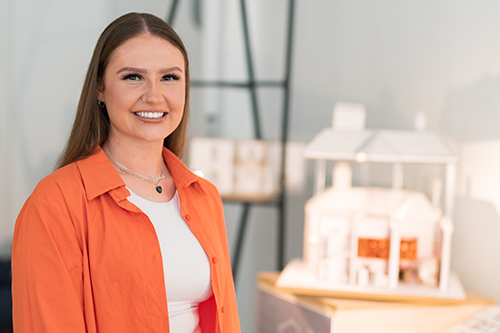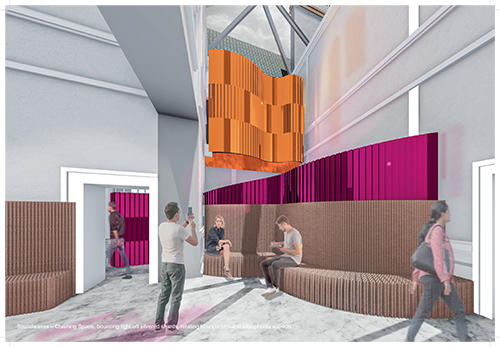An Edinburgh Napier interior and spatial design student is using her own experience and final year project to raise awareness of a condition that, until recently, had been described as an ‘invisible’ disorder.
Keran Andrew has been affected by misophonia – a condition in which certain sounds trigger emotional or physiological responses – since she was 12 years-old.
After going undiagnosed for years during her childhood, it was only recently that Keran began to understand more about the condition and what she could do to help herself live with it on a day-by-day basis.
Her mother, Loreen, is also affected by the condition but with not an awful lot known about it – and with next to no support publicly available for those experiencing misophonia – Keran chose to hide the condition from her friends and peers.
Until now.
As part of her final year project, Keran and her fellow interior and spatial design students are encouraged to pick a site and conceptually design a building that would bring benefits to its community if it was developed.
Keran’s building design aims to educate people about misophonia and introduces a number of aspects that emphasise supportive building design for those affected by the condition.
Her work focuses heavily on interior installations and curved partitions that help dampen loud noises. Her design also features a space for misophonia treatment, indoor and outdoor cafes and an exhibition space that individuals affected by the condition can use to get their thoughts and feelings on living with misophonia across to a wider audience.
Her building plans, designs and 3D model, which she painstakingly built herself by hand, can be viewed at Edinburgh Napier’s annual degree show, In Full Bloom, at its Merchiston campus this week.
Although just conceptual at this stage, Keran hopes that her project will shine a spotlight on the importance of the sound design required to support those affected by the condition.
She said: “There’s still not an awful lot said or known about misophonia and what can be done to help it. My mum is affected by it and obviously I am too, but we’ve just sort of learnt certain things ourselves that help us to live as normal life as possible, despite having this condition that can be quite difficult to cope with.
“I’ve always been a bit embarrassed of telling people about the condition and I think that really stems from there not being enough information on it out there. Would people think I would just be making it up?
“That’s really why I chose the condition – and my experiences with it – to be a key subject for my final year project. I wanted to firstly help educate people about misophonia and what it is, and also highlight some of the key building design features that builders and constructors and architects could think about when designing their own buildings.
“If more people were aware of the conditions, and more buildings were designed to support those with it, then it would be a lot easier to live with.
“My classmates at University now know a lot about the condition through my work, so if it even helps one of them understand why they feel the way they do when the hear certain noises then its definitely been worthwhile. The more people that know about misophonia and what it is, the better.”
In Full Bloom, Edinburgh Napier’s Degree Show, runs from 26 May to 2 June at the University’s Merchiston campus.
More information on the degree show can be found here.